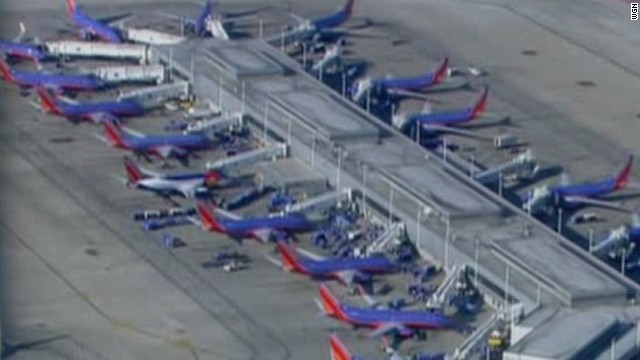By Shradha Singh, Staff writer
How is it that just one man with a lighter is able to delay flights all across the country? This is the question that the Federal Aviation Administration (FAA) is currently pressed to answer after this exact incident occurred in the Chicago Air Route Traffic Control Center on September 26, 2014. What resulted was a huge aviation mess that delayed or canceled flights all over the nation, including right here at Sacramento International Airport.
On September 26, a contract employee for the FAA, Brian Howard, walked into the Chicago air traffic control tower, and set fire to the key center. This immediately affected two nearby airports, Midway International Airport in Aurora, Illinois, and O’Hare International Airport in Chicago, Illinois. The latter airport is the world’s second-largest airport, and the disruption of its normal schedule created a domino effect which delayed flights all across the United States. This included three flights at Sac International, two of which were supposed to depart for the crippled airports.
As reported by CNN, the fire forced air traffic controllers to transfer flight data manually rather than by computer. It also damaged the telecom line that allows flight plans to be conveyed from the airlines directly to the control center. Instead, airlines had to fax flight plans to the tower, and with so much manual data to be managed, two controllers were needed for each position. Eventually the FAA had to bring in extra technicians in order to effectively handle the situation.
Police report Howard’s actions occurred as part of an apparent suicide attempt. According to an affidavit, first responders arrived at the tower to find smoke and a trail of blood that led to Howard in possession of two knives and a lighter, and seemingly in the process of trying to cut his own throat. Paramedics took the knife and sent a resistant Howard to a hospital in Aurora for treatment. He now faces a charge of one count of destruction of aircraft or aircraft facilities, which, if he is convicted, could ultimately lead to a sentence of twenty years in prison.
Though authorities managed to get the major airports affected up and running from only sixty percent to very near full capacity within a span of two weeks, critics still expressed concern about how this one incident was able to wreak so much havoc. Technicians have defended themselves, saying that although they are prepared for this sort of situation, the process to restore the system to its original state is not instantaneous. Luke Drake, vice president of Region 1 of the Professional Aviation Safety Specialists, also said that the response to the sabotage was a “tremendous success.”
Still, that does not erase the fact that numerous previous aviation and airline mishaps and safety issues have occurred in the United States in a relatively short period of time. In August of this year, a passenger, 53-year-old Eric Slighton, was able to pose as an airport security officer at San Francisco International without raising suspicion. Just a few months earlier in April, a 15-year-old, Yahya Abdi, was able to climb over the fence at an airport in San Jose, find his way into a plane’s landing gear, and staying in there, travel all the way to Maui, with no one finding out until after the flight was over. Though these incidents are admittedly nothing like the events of this past September, the increasing number of individuals able to get past airport, airline, and aviation security is becoming an alarming trend in the United States, one the FAA and its related counterparts need to be able to stop soon, in order to keep travelers safe, secure, and unconcerned about the status of their flight.
